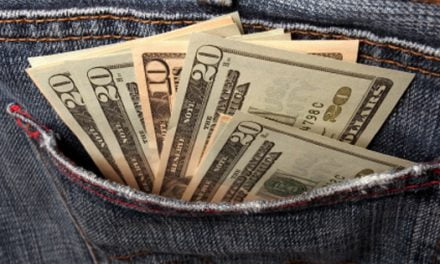This article explores the government response to homeowners and renters unable to make housing payments due to the recent coronavirus (COVID-19) outbreak. Whether or not the coming months will result in a foreclosure or eviction crisis will be up to the government’s efforts to keep individuals housed during this time of reduced and eliminated incomes.
The economic impacts of COVID-19 are still emerging
The global conflagration of pandemic, market crash and recession is shaking California’s economy to its core. No sector is left untouched, and residential and commercial real estate markets are already feeling the repercussions.
California’s governor has ordered nearly all 40 million of the state’s residents to shelter in place. However, on top of businesses closing, jobs lost and hours being reduced, millions will soon find themselves unable to pay their rent or mortgages.
Roughly 20% of the state’s working population is employed in an industry that has been essentially shut down by COVID-19. For example, the retail, tourism and hospitality industries regularly employ roughly 3.5 million individuals across California. Further, the workers employed in these industries have some of the lowest-paying jobs, thus ensuring few have sufficient personal savings to support the continuing weeks of unemployment.
To shelter in place, homeowners and renters will need to keep their homes, even when they won’t be able to make their housing payments. In the short term, Governor Newsom has authorized local governments to:
- halt renter and homeowner evictions;
- slow foreclosures; and
- protect against utility shutoffs.
But how these protections actually play out is left in the hands of local governments (read about how Los Angeles and San Francisco are instituting these bans here).
At the national level, Fannie Mae and Freddie Mac have suspended foreclosures and evictions for at least 60 days. Further, the agencies will allow mortgage forbearance — allowing homeowners to reduce or suspend payments — up to 12 months for homeowners under economic hardship due to COVID-19. During the forbearance period, homeowners won’t be charged late fees or have their delinquent payments reported to credit agencies.
However, what happens at the end of the 12-month forbearance period is still up in the air. The Federal Housing Finance Agency (FHFA), which oversees Fannie Mae and Freddie Mac, states additional assistance may be available to those who cannot “catch up” at the end of the relief period, though homeowners will need to work with their mortgage servicers to hash that out.
Expect to see more FHFA guidance in the months ahead as the number of mortgages in forbearance grows. While most mortgages are backed by the agencies, the FHFA also expects other non-government backed mortgage lenders will soon introduce similar forbearance rules to ensure relief to all mortgaged homeowners.
In the meantime, real estate professionals can encourage their clients facing economic hardship due to COVID-19 to contact their mortgage servicers. Keep in touch with these clients and stay informed of their outcomes so you can remain informed, and in case you can be of assistance if they end up needing to list their home or complete a distressed sale.
Housing during a prolonged economic crisis — and pandemic
With the outsized impacts to the housing market that came with the 2008 recession, you are probably wondering about the potential for another deluge of distressed sales, like foreclosures, short sales and real estate owned (REO) properties.
How many distressed sales will hit the market in the coming months will depend on the answer to two questions:
- what will happen to home prices during this recession; and
- will the federal and state governments step in to halt foreclosures over the many months to come of reduced and eliminated incomes?
As to home prices, normally, a reduced home sales volume (less demand) directly translates to lower home prices. After over a year of declining sales volume, California was already in line for a price correction. Now, with the pandemic keeping people at home and panic sealing shut homebuyers’ wallets, sales volume will plummet.
However, today’s dramatically low interest rates are complicating this dynamic by acting as a stimulus for home prices. But low interest rates can only go so far — many homebuyers who were qualified last month have lost their jobs this month. How far the boost from low interest rates will carry home prices depends on just how low interest rates will go.
Right now, the Federal Reserve’s (the Fed’s) target benchmark rate is at zero and the 10-year Treasury Note is hovering near historic lows. The Fed is also purchasing mortgage-backed securities (MBS) to support the mortgage market. The only way FRM rates will go lower is for lenders to accept a lower margin — which is unlikely, as they are currently padding their margins in anticipation of a deep recession — or for the Fed to make the unprecedented move to go negative.
If the Fed goes negative in 2020, lower FRM rates are assured, which will continue fueling the boost to home prices. This will stave off a steep reduction in home values and a corresponding increase in underwater homes.
On the other hand, if home prices drop in accordance with the severity of the housing market’s slowdown (or perhaps better stated, the housing market’s abrupt stop), negative equity will rise. Underwater homeowners who need to sell will find short sale or foreclosure their only option.
But that’s where the government’s forbearance plans come in. When homeowners are allowed to remain in their homes despite being unable to pay, they won’t be forced to accept a distressed sale option.
Real estate professionals to feel the pinch
How will COVID-19 impact the state’s 300,000+ individuals employed in the real estate and rental/leasing industry?
As 2020 progresses, sales agents and brokers will find themselves with fewer transactions — and fees — to go around. Further, when home prices decline, the fees earned will be smaller. The result will be reduced income for all practicing agents and brokers. Many will drop out of the profession altogether (though the options for other job openings at the moment are slim).
However, creative and proactive agents will find ways to supplement their lost income by taking actions like:
- adding a mortgage loan officer (MLO) endorsement to their Department of Real Estate (DRE) license to assist in refinances at today’s low rates;
- adding a notary public license to their toolbox;
- becoming a property manager;
- studying property investment strategies like forming real estate syndicates; and
- preparing for distressed sales.
Related article:
An evolving forecast
Going into 2020, economists were forecasting a regular business recession. On top of that, the economist Paul Krugman recently likened the economic impact from the COVID-19 pandemic to the fallout from a natural disaster.
We are in the middle of a unique, global economic moment and the end result is still out of reach. Real estate professionals need to keep a close eye on the situation and communicate developments to their clients. This includes tracking:
- offers of mortgage and renter assistance as they unfold at the local and federal levels;
- the direction of interest rates; and
- local home values along with the number of underwater homes.
Check in with first tuesday for updates on these factors as they quickly change in the coming weeks.




















